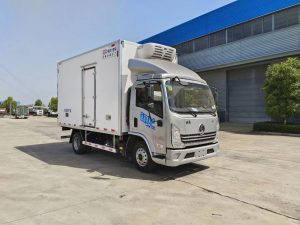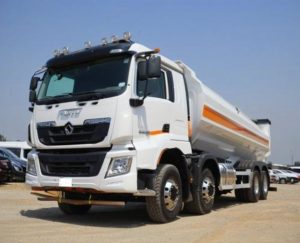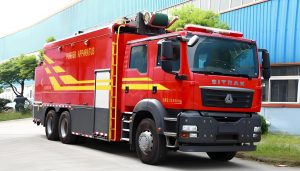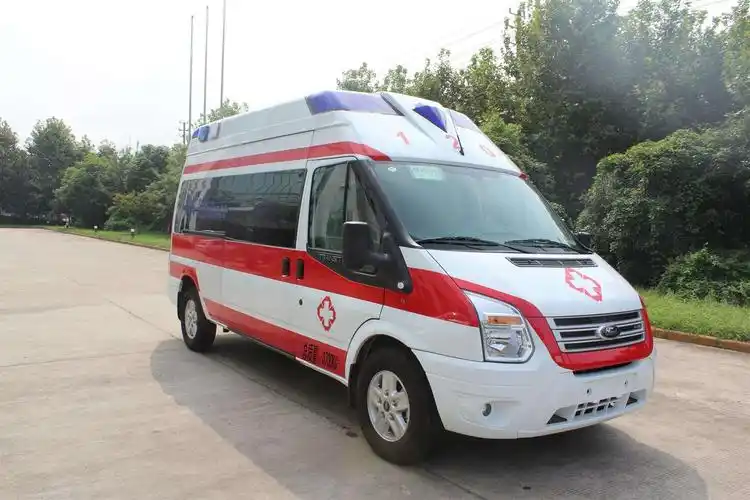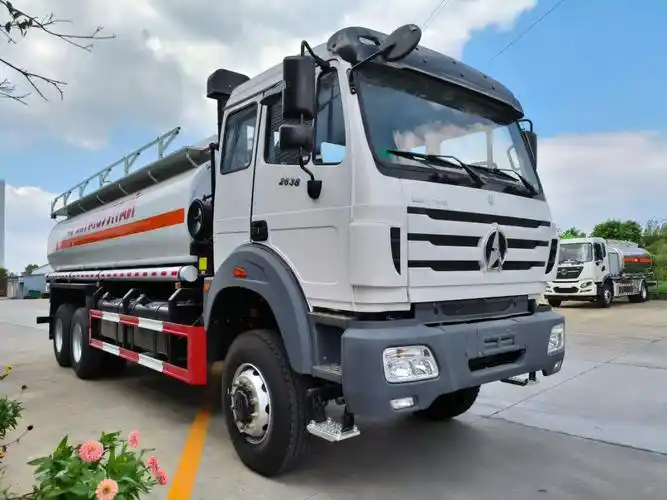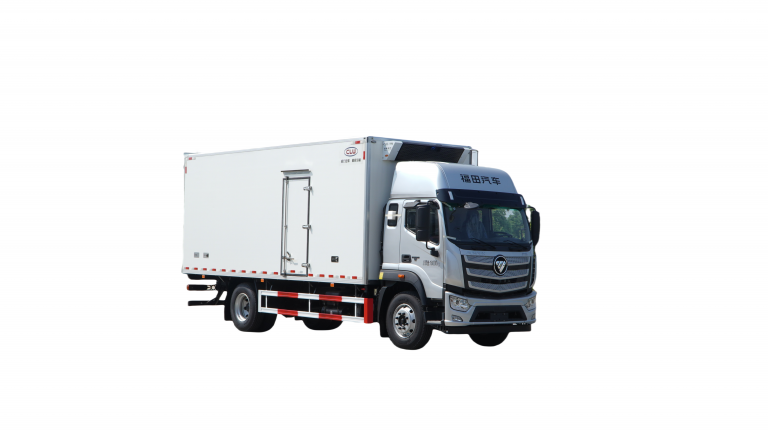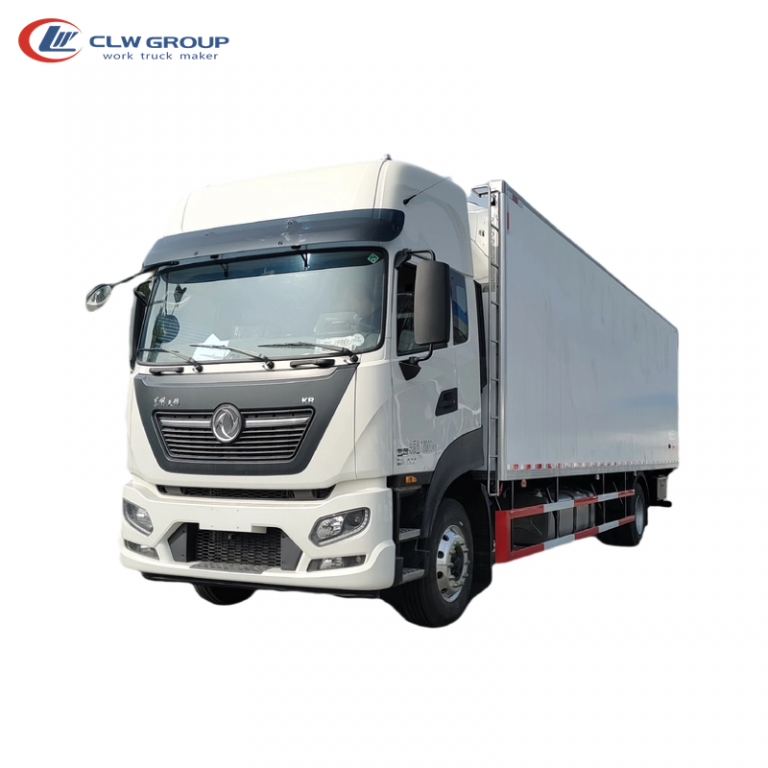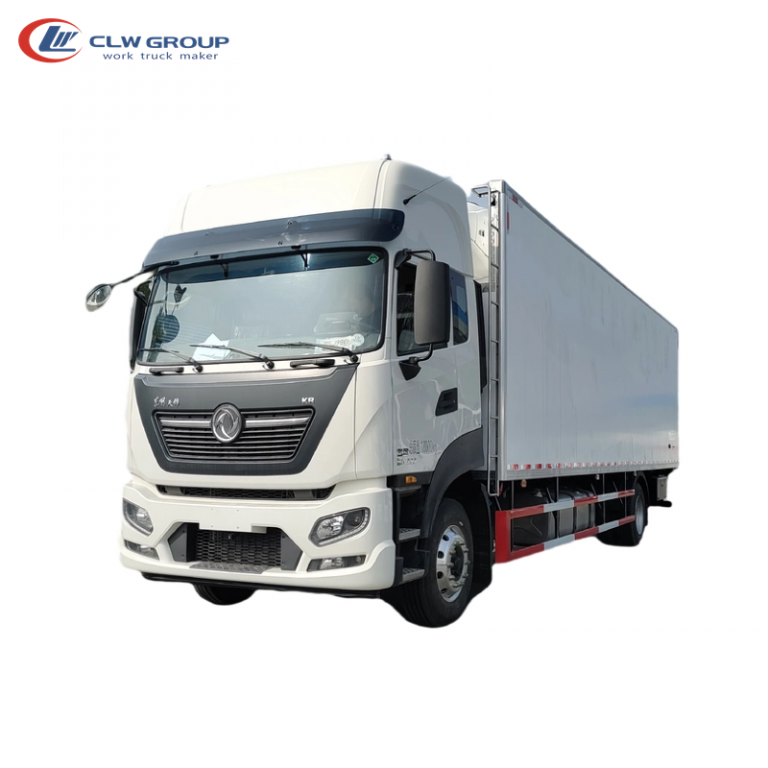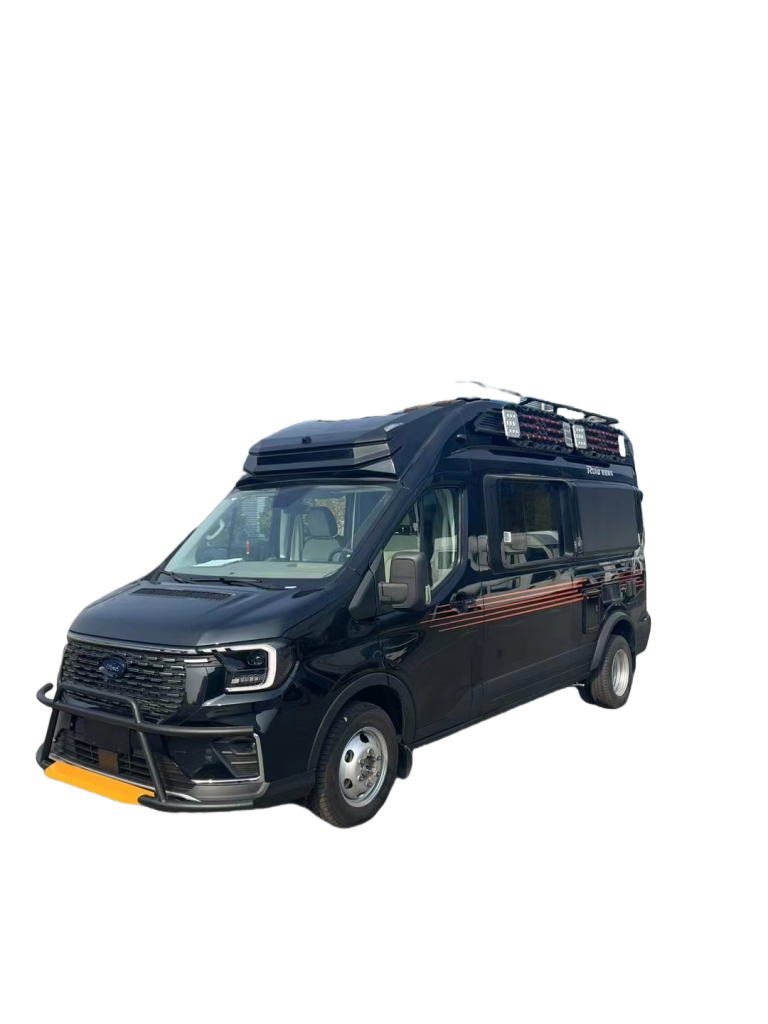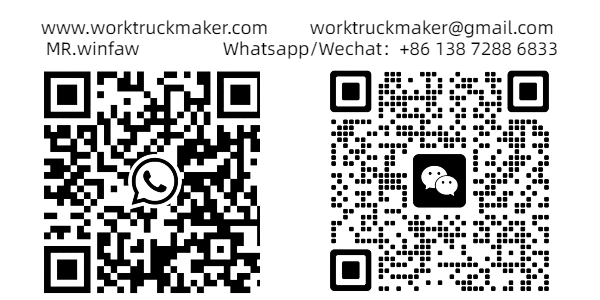Table of Contents
Toggle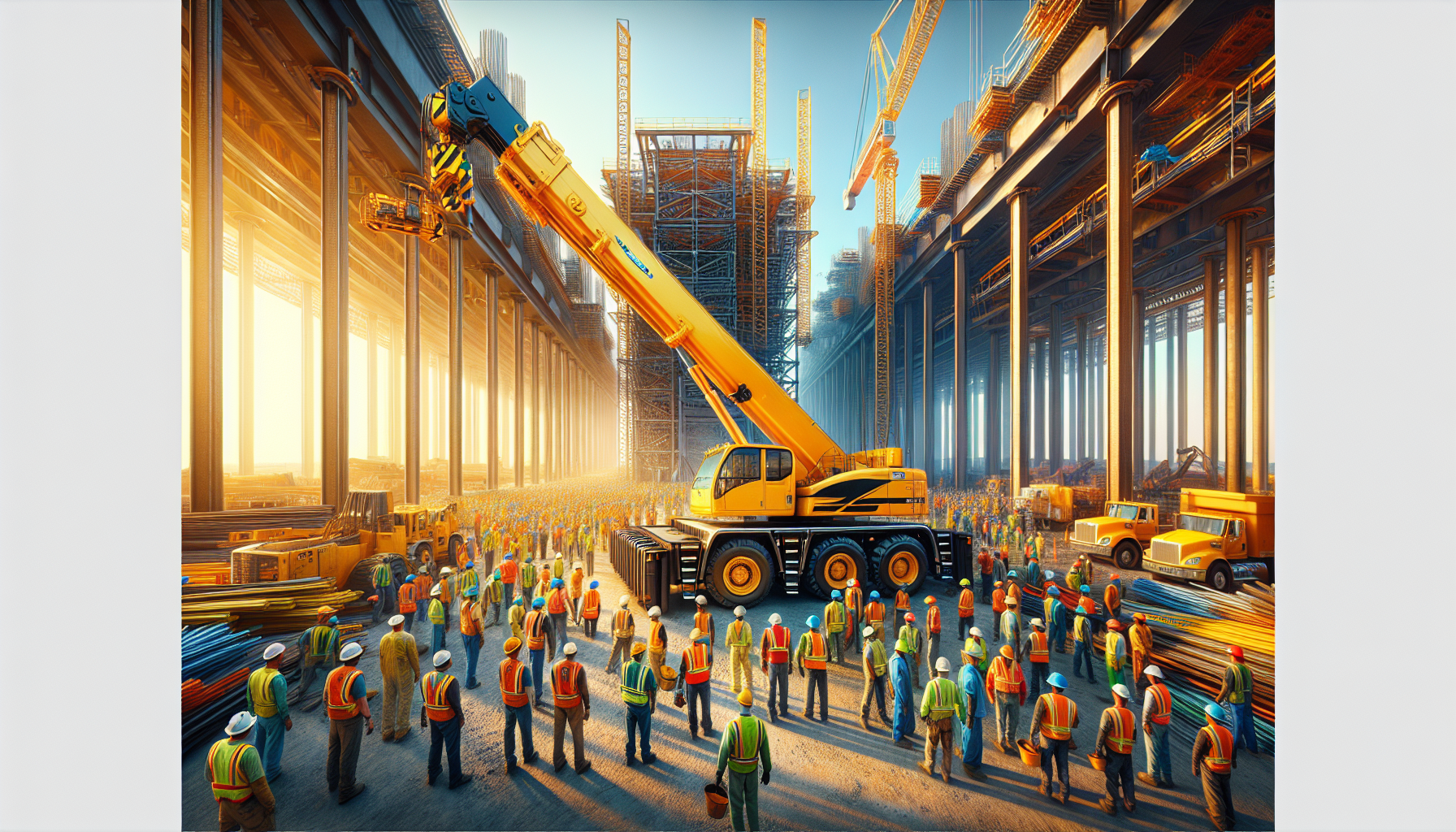
Choosing the right boom truck can make or break a construction project. These versatile machines, also known as boom truck cranes, combine the mobility of a truck with the lifting power of a crane, offering a unique solution for various lifting tasks. The selection process involves careful consideration of multiple factors to ensure the equipment meets the specific needs of the job at hand.
When picking a boom truck, project managers need to analyze the job site conditions, understand different boom configurations, and consider operator comfort. They must also take into account the latest technological advancements and ensure compliance with safety regulations. By weighing these aspects, companies can boost productivity, cut costs, and complete projects more efficiently. This article will explore the key factors to consider when choosing the perfect boom truck for any construction or lifting project.
Defining Your Project Scope
To choose the right boom truck for a project, it’s crucial to start by defining the project scope. This process involves a thorough assessment of the project requirements, ensuring that the selected equipment aligns perfectly with the specific needs of the job. By carefully evaluating various factors, project managers can make informed decisions that boost productivity, cut costs, and lead to more efficient project completion.
Type of Work
The nature of the work plays a significant role in determining the most suitable boom truck. Different industries and projects have unique requirements that influence equipment selection. For instance:
- Construction Industry: Projects in this sector often need boom trucks with higher lifting capacities and longer reaches to handle heavy materials and access tall structures.
- Telecommunications Industry: Work in this field might require boom trucks with smaller footprints and greater maneuverability to access tight spaces and navigate urban environments.
- Residential vs. Commercial Projects: The size of the work area can limit the equipment options. Residential or commercial lots tend to be smaller, restricting the size of the boom truck that can be used effectively.
Project managers should consider the specific tasks at hand, including the weight and dimensions of materials to be lifted, as well as the required height and reach. It’s essential to verify that the boom truck’s weight capacity and boom length can efficiently accomplish the intended tasks.
Duration of Project
The length of time a boom truck will be needed is another critical factor in the selection process. Project duration influences not only the choice between purchasing and renting but also the type of boom truck to be used.
- Short-term Projects: For projects with shorter durations, renting a boom truck is often more cost-effective. This option reduces overhead costs and optimizes productive output.
- Long-term Projects: If the boom truck will be used frequently or for extended periods, investing in a more robust and durable machine might be warranted.
Determining the rental term or purchase decision ahead of time helps in adequately pricing the project and managing multiple projects simultaneously or lining them up back-to-back.
Budget Constraints
Financial considerations are always a key factor in equipment selection. Project managers must balance the need for specific capabilities with budget limitations. When evaluating boom trucks, consider the following:
- Rental vs. Purchase: For shorter-term projects, renting a boom truck is generally more cost-effective due to lower operating costs. However, for longer-term projects or frequent use, purchasing might be more economical in the long run.
- Operating Costs: Factor in fuel consumption, maintenance requirements, and potential downtime when calculating the total cost of using a boom truck.
- Advanced Features: While boom trucks with advanced hydraulic systems and controls might offer precise positioning and enhanced efficiency, they often come at a higher price point. Evaluate whether these features are essential for the project’s success.
By carefully considering these aspects of the project scope, managers can make informed decisions about the most appropriate boom truck for their needs. This thoughtful approach ensures that the selected equipment not only meets the technical requirements of the job but also aligns with the project’s financial constraints and timeline.
Key Factors in Boom Truck Selection
Selecting the right boom truck for a project involves careful consideration of several crucial factors. These elements play a significant role in determining the efficiency and effectiveness of the equipment for specific tasks. Project managers and decision-makers need to evaluate these key aspects to ensure they choose a boom truck that aligns with their project requirements and business needs.
Lifting Capacity
The lifting capacity of a boom truck is a critical factor in the selection process. It refers to the maximum weight the equipment can safely lift and maneuver. Boom trucks come in various lifting capacities, ranging from 20,000 lb (9,072 kg) to 36,000 lb (16,329 kg) and beyond. The choice depends on the nature of the project and the typical loads that need to be handled.
For instance, a boom truck with a 20,000 lb capacity might be suitable for lighter construction tasks or telecommunications work. On the other hand, heavier construction projects or industrial applications may require a boom truck with a 36,000 lb capacity or more. It’s essential to choose a boom truck that can handle 90% of the project’s lifting requirements. For the remaining 10% of tasks that exceed the chosen boom truck’s capacity, renting a larger crane for those specific jobs is often more cost-effective.
Boom Length and Reach
The boom length and reach are crucial factors that determine the vertical and horizontal distances a boom truck can cover. Boom lengths vary significantly, ranging from 38′ (11.6 m) to 125′ (38.1 m) or more. The choice of boom length depends on the project’s specific requirements and the working environment.
Maximum tip height is another important consideration, which can range from 48′ (14.6 m) to 137′ (41.7 m) or higher. This factor is particularly important for projects involving tall structures or requiring high-reach capabilities.
When selecting a boom truck, project managers should consider the following:
- Short Booms:
- Lighter and easier to operate
- Require a smaller outrigger footprint
- Ideal for tight working conditions and lighter lift requirement projects
- Long Booms:
- Provide increased crane reach and height
- Offer reduced lifting capacity compared to shorter booms
- Suitable for projects requiring extensive vertical or horizontal reach
Truck Size and Chassis
The size of the truck and its chassis configuration play a crucial role in the boom truck’s overall performance and suitability for different job sites. Key considerations include:
- Single vs. Tandem Axle Trucks:
- Single axle trucks are lighter and have a shorter wheelbase, making them ideal for residential projects with driveway access.
- Tandem axle trucks offer increased hauling power and accommodate larger capacity cranes, making them suitable for commercial projects.
- Cab Configurations:
- Regular cab: Two doors with one row of seating
- Extended cab: Two full-size doors with two narrower rear doors and limited back row legroom
- Crew cab: Four full-size doors with two full rows of seating
- Weight Considerations:
- The unloaded vehicle weight (UVW) impacts the payload capacity.
- Extended and crew cabs have higher UVWs, which can limit payload capacity.
- Engine Type:
- Gas engines weigh less, offering higher payload capacity but less torque.
- Diesel engines weigh more (approximately 800 lb more) but provide higher torque and tow capacity.
- Single Rear Wheel (SRW) vs. Dual Rear Wheel (DRW):
- DRW chassis offers greater stability, essential for crane trucks and wider flatbeds.
- SRW chassis provides better fuel efficiency and lower upfront and repair costs.
By carefully evaluating these key factors – lifting capacity, boom length and reach, and truck size and chassis – project managers can make informed decisions when selecting the most appropriate boom truck for their specific needs. This thoughtful approach ensures optimal performance, efficiency, and safety on the job site.
Understanding Different Boom Configurations
Boom trucks come in various configurations, each designed to meet specific project requirements. Understanding these different boom types is crucial for selecting the right equipment for the job. Let’s explore the main boom configurations available in the market.
Telescopic Booms
Telescopic booms, also known as stick booms or straight booms, are characterized by their ability to extend straight out from the boom hoist. These booms offer maximum reach and are ideal for projects requiring significant height or access to areas blocked by rough terrain. Key features of telescopic booms include:
- Impressive reach: Some models can extend up to 185 feet, with more common maximum ranges around 150 feet.
- Versatility: Suitable for various tasks such as industrial maintenance, electrical work, painting, glazing, bridge inspection, and tree trimming.
- Quick extension: The boom can be rapidly deployed, allowing for efficient operations.
- Mobility: Many models can be driven with the boom fully extended in certain positions.
Telescopic booms excel in providing both maximum height and outreach, making them ideal for accessing work from a distance, especially where terrain or obstacles prevent close access. However, they require more space to operate compared to other configurations.
Articulating Booms
Articulating booms, also called knuckle booms, feature a distinctive design with multiple sections separated by joints or “knuckles.” This configuration offers unique advantages:
- Flexibility: The arm can move the work platform over and around obstacles, providing up-and-over access.
- Reach: The tallest articulating boom lifts can achieve heights of up to 150 feet with a 75-foot horizontal reach.
- Maneuverability: Ideal for tight or difficult-to-reach areas, allowing workers to change positions frequently.
- Versatility: Well-suited for indoor use due to their ability to bend and contract in confined spaces.
Articulating booms provide greater vertical and horizontal flexibility compared to telescopic booms, though they typically offer less horizontal reach. Their design allows for precise positioning in challenging environments, making them invaluable for complex projects.
Hybrid Designs
Recent innovations have led to the development of hybrid boom trucks, combining traditional diesel engines with electric motors. These designs offer several advantages:
- Dual power sources: A diesel engine for on-road driving and an electric motor for aerial tasks.
- Fuel efficiency: The electric motor powers the hydraulic system, reducing fuel consumption during boom operation.
- Quiet operation: Electric motors run silently, minimizing disturbance in residential areas and improving communication between aerial workers and ground crews.
- Reduced maintenance: Electric components have fewer moving parts, leading to lower maintenance requirements.
- Eco-friendly: The electric motor produces no harmful emissions, making it safer for workers and the environment.
Hybrid boom trucks are particularly useful in areas with strict idling laws, as they can operate the boom without running the main diesel engine. They also offer the flexibility to switch between electric and diesel power depending on the job requirements and battery capacity.
When selecting a boom configuration, project managers should consider factors such as the required reach, working environment, and specific task requirements. Telescopic booms offer unparalleled height and outreach, while articulating booms provide superior flexibility in tight spaces. Hybrid designs combine the benefits of traditional and electric power sources, offering a versatile solution for various project needs. By understanding these different configurations, decision-makers can choose the most appropriate boom truck to enhance productivity and efficiency on their job sites.
Analyzing Job Site Conditions
Analyzing job site conditions plays a crucial role in selecting the right boom truck for a project. A thorough assessment of the work environment ensures safety, efficiency, and optimal performance of the equipment. Project managers must consider several key factors when evaluating the job site to make informed decisions about the most suitable boom truck configuration.
Ground Stability
The stability of the ground is a critical factor in boom truck operations. Different terrains require specific types of equipment to ensure safe and efficient lifting. For instance, rough terrain cranes are designed to navigate and operate on difficult terrain, making them essential for remote job sites with challenging ground conditions. Similarly, crawler cranes excel in soft or uneven terrains due to their track-based movement system, which provides exceptional stability.
To prevent ground failure issues and ensure safe operations, it’s crucial to use appropriate outrigger pads. SafetyTech Outrigger Pads are particularly well-suited for knuckle boom and boom truck operations due to their ease of use, ergonomics, and unbreakable construction. These pads help reduce overall ground bearing pressure and prevent problems such as cracked driveways, asphalt indentations, and “punch-throughs” caused by the concentrated pressure under stabilizers and outriggers.
Space Limitations
Available space at the job site significantly influences the choice of boom truck. In urban environments or congested work sites, space limitations can pose challenges for equipment maneuverability and deployment. Project managers must carefully consider the following aspects:
- Outrigger deployment: Ensure adequate space for the full extension of outriggers, which provide necessary stability during lifting operations.
- Tail swing: In crowded job sites, such as busy roadways, an unexpectedly large tail swing arc can pose a danger to people or objects in the vicinity.
- Boom configuration: Articulating booms offer greater flexibility in tight spaces, allowing workers to change positions frequently and access hard-to-reach areas.
For projects with severe space constraints, compact mini-cranes might be the most suitable option, as they can navigate tight spaces where larger cranes cannot operate effectively.
Access Points
Evaluating access points is essential for ensuring that the boom truck can reach all necessary areas of the job site without difficulty. This is particularly important in urban environments or congested work sites where mobility may be restricted. Consider the following factors when assessing access points:
- Site layout: Analyze the overall layout of the job site, including entry and exit points, to determine the most efficient routes for the boom truck.
- Obstacles: Identify any potential obstacles that may impede the boom truck’s movement or operation, such as overhead power lines, trees, or existing structures.
- Surface conditions: Verify that the access routes can support the weight of the boom truck, especially when fully loaded.
By carefully evaluating these job site conditions, project managers can select the most appropriate boom truck for their specific needs. This thoughtful approach ensures optimal performance, safety, and efficiency throughout the project’s duration.
Importance of Operator Comfort and Efficiency
The comfort and efficiency of boom truck operators play a crucial role in the overall productivity and safety of construction projects. As operators spend long hours in their “office,” manufacturers have recognized the need to enhance the working environment within the cab. This focus on operator well-being has led to significant advancements in cab design, control layout, and visibility features.
Cab Design
Modern boom truck cabs are engineered with the operator’s comfort in mind. Manufacturers have introduced features such as tilt-up cabs, which make it easier for operators to monitor the load on the hook. This design improvement reduces neck strain and enhances overall ergonomics. Some models, like National Crane’s latest offerings, feature cabs that can tilt hydraulically up to 20 degrees, providing operators with optimal viewing angles.
Climate control has become a standard feature in many boom truck cabs. High-output HVAC systems ensure comfortable working conditions in all weather conditions. Some manufacturers have gone a step further by incorporating heated seats, adding an extra layer of comfort during colder months.
Dual entrances have been implemented in certain models to ensure safe access and egress from the machine. For instance, Altec introduced a crane cab with dual entry, featuring a front entry designed to reduce slip-trip-fall hazard exposure when the crane is in the stowed position, and a side entry for convenient access when the crane is positioned perpendicular to the carrier.
Control Layout
The layout of controls within the cab has been optimized to enhance operator efficiency. Responsive single- and dual-axis electronic joystick controls are now common, allowing for easy adjustment to suit individual operator preferences. This customization helps reduce fatigue and improves overall productivity.
Advanced control systems, such as the CDTpro control system with range finder technology, enable operators to control the crane using a remote controller. This feature allows operators to remain clear of load paths, enhancing safety on the job site. Real-time feedback on load capacity, current weight, and remaining capacity empowers operators to make informed decisions quickly.
Some manufacturers have simplified setup and operation by integrating color, graphical control systems. These systems enable monitoring of all vital truck and crane data from within the crane cab, streamlining the operator’s workflow.
Visibility Features
Improved visibility has been a key focus in recent boom truck designs. Manufacturers have increased glass areas and reshaped hoods to reduce blind spots and provide better sightlines to work tools. This emphasis on enhanced visibility results in increased productivity and jobsite safety.
Big, full-view windows have been incorporated to minimize blind spots. Some models feature a low sightline at the base of the lower front glass, which is particularly useful when working with personnel in ditches or performing trenching applications.
Camera systems have become increasingly common in boom trucks. Rear-view cameras are now standard on many models, with some offering the option to add side cameras for greater visibility. These camera systems help operators overcome positioning challenges by providing visuals of every side of the truck.
Innovative approaches to improving visibility include the use of color schemes. For example, some manufacturers have switched from bright colors to darker tones for loader arms, as darker colors tend to blend with the background, allowing operators to focus more easily on the work area.
By prioritizing operator comfort and efficiency through thoughtful cab design, intuitive control layouts, and enhanced visibility features, boom truck manufacturers are not only improving the working conditions for operators but also contributing to increased productivity and safety on construction sites.
Technological Advancements in Boom Trucks
The boom truck industry has witnessed significant technological advancements in recent years, enhancing safety, efficiency, and overall performance. These innovations have transformed the way operators interact with their machines and how fleet managers monitor their equipment.
Computerized Control Systems
Modern boom trucks now feature sophisticated computerized control systems that provide operators with real-time information and enhanced control. The RaycoWylie i4300 crane system exemplifies this advancement, offering a comprehensive load monitoring solution. This system supports multiple sensors, including boom angle and length cable reel sensors, load sensors, boom tip anti-two-block devices, and wind speed indicators.
The i4300 system utilizes a CAN Bus (Controlled Area Network) to link all sensors, providing a streamlined and efficient data flow. Pressure sensors or dynamometers deliver electrical signals proportional to the lifted load, while an inclinometer measures boom angle and a reeling drum tracks boom extension. The system then calculates radius and load using preprogrammed dimensional crane data.
During operation, the i4300 compares the calculated load against the maximum permissible crane loading, expressing the actual load as a percentage of the permitted load (% SWL). If this percentage exceeds a preset value, alarms and safety functions activate, ensuring safe operation. The system displays critical information such as hook load, permissible load, main boom angle, and radius on a 4.3-inch full-color LCD screen.
Telematics
Telematics has emerged as a game-changing technology in the boom truck industry, offering unprecedented insights into vehicle and operator performance. These systems go beyond simple “dots on a map” tracking, providing a wealth of data to improve safety, efficiency, and maintenance.
- Remote Monitoring: Telematics allows fleet managers to track vehicle location, fuel consumption, and maintenance needs in real-time.
- Driver Performance: These systems can monitor and analyze operator behavior, identifying areas for improvement and potential training opportunities.
- Predictive Maintenance: By continuously monitoring vehicle health, telematics can predict potential issues before they lead to breakdowns, reducing downtime and maintenance costs.
- Asset Utilization: For rental companies, telematics provides valuable data on equipment usage, helping optimize fleet management and improve ROI.
- Safety Alerts: Some systems, like Trimble’s Out-of-Truck notification, use geofencing and GPS data to enhance worker safety in remote locations.
Safety Innovations
Safety has been a primary focus of technological advancements in boom trucks. Manufacturers have introduced several innovations to enhance operator and job site safety:
- Advanced Camera Systems: Modern boom trucks now feature multiple cameras, providing operators with improved visibility of the hoist, rear of the truck, and surrounding areas.
- Smart Sensors: Bluetooth-enabled sensors can track high-value equipment and tools throughout a job site, preventing loss and unauthorized use.
- Articulated Booms: The increasing popularity of articulated or knuckle booms has improved maneuverability and safety, especially in urban or cramped job sites.
- Wind Speed Indicators: These devices help operators make informed decisions about safe lifting conditions.
- Remote Controls: Some swing cab boom trucks now feature remote controls for both crane and outrigger functions, allowing operators to safely position the truck from outside the cab.
- Collision Prevention: Smart cameras and sensors can detect potential collisions and alert operators, improving overall job site safety.
These technological advancements have significantly narrowed the gap between boom trucks and purpose-built truck cranes. As the industry continues to evolve, we can expect further innovations in areas such as artificial intelligence, automation, and enhanced connectivity, further improving the safety, efficiency, and capabilities of boom trucks.
Regulatory Compliance and Certifications
DOT Regulations
The Federal Motor Carrier Safety Administration (FMCSA) implemented new cargo securement rules on January 1, 2004, for motor carriers operating in interstate commerce. These regulations, based on the North American Cargo Securement Standard Model Regulations, aim to reduce accidents caused by cargo shifting or falling from commercial motor vehicles. The rules require changes in how cargo securement devices are used to prevent articles from shifting on or within, or falling from vehicles.
Key aspects of the DOT regulations include:
- Performance requirements for cargo securement systems to withstand deceleration in the forward direction and acceleration in rearward and lateral directions.
- Incorporation of manufacturing standards for tiedowns, including steel strapping, chain, synthetic webbing, wire rope, and cordage.
- Requirements for tiedowns to be attached and secured to prevent loosening, unfastening, opening, or releasing during transit.
- General securement rules applicable to all cargo types, with certain exceptions, and commodity-specific rules for difficult-to-secure items.
For boom truck operators, it’s crucial to understand these regulations, especially when transporting equipment between job sites. While a DOT number may not be necessary for intrastate operations, it’s essential to check with the specific state requirements. For interstate operations, a DOT number is typically required.
OSHA Requirements
The Occupational Safety and Health Administration (OSHA) has established stringent regulations for crane and boom truck usage to ensure workplace safety. These requirements focus on operator certification, equipment standards, and safe operating practices.
Key OSHA requirements include:
- Operator Certification: Operators of cranes rated to lift more than 2,000 lb must be certified by a third-party organization and designated as “qualified.”
- Equipment Standards: Aerial lifts acquired after January 22, 1973, must conform to the American National Standards for ‘Vehicle Mounted Elevating and Rotating Work Platforms,’ ANSI A92.2-1969.
- Field Modifications: Any modifications to aerial lifts must be certified in writing by the manufacturer or an equivalent entity to ensure compliance with ANSI A92.2-1969 standards.
- Electrical Testing: All electrical tests must conform to ANSI A92.2-1969 section 5 requirements, with equivalent DC voltage tests allowed in lieu of AC voltage tests.
- Welding Standards: All welding must conform to applicable American Welding Society (AWS) standards.
Operator Certification Needs
OSHA’s regulations require boom truck operators to obtain certification through various means:
- Certification by a nationally-accredited crane operator testing organization, valid for five years.
- Qualification through an employer’s independently-audited program.
- Qualification by the U.S. military.
- Compliance with state or local licensing requirements that meet or exceed federal guidelines.
The CCO Service Truck Crane Operator certification (STC) is a specific subcategory designed for operators of smaller service truck cranes. This certification involves passing both written and practical exams within a twelve-month period. It’s important to note that while STC-certified operators are limited to service truck cranes, operators with the broader Telescopic Boom—Fixed Cab (TSS) certification can operate both service truck cranes and larger telescopic boom cranes.
Recertification is required every five years. Operators with at least 500 hours of crane-related experience during their certification period may recertify without retaking the Practical Exam. However, all recertification requirements must be completed within the 12 months prior to the certification’s expiration date.
By adhering to these regulatory requirements and certification standards, boom truck operators and companies can ensure safe, compliant, and efficient operations in various work environments.
Conclusion
Selecting the right boom truck for a project has a significant impact on its success and efficiency. By carefully considering factors such as lifting capacity, boom configuration, and job site conditions, project managers can ensure they choose equipment that best fits their needs. The advancements in technology, including computerized control systems and telematics, have revolutionized the industry, enhancing safety and productivity on construction sites.
To wrap up, the boom truck selection process involves a thorough analysis of project requirements, regulatory compliance, and operator comfort. By taking these factors into account, companies can boost their productivity, cut costs, and complete projects more efficiently. As the industry continues to evolve, staying informed about the latest innovations and safety standards will be crucial to make the most of these versatile machines in various construction and lifting projects.

